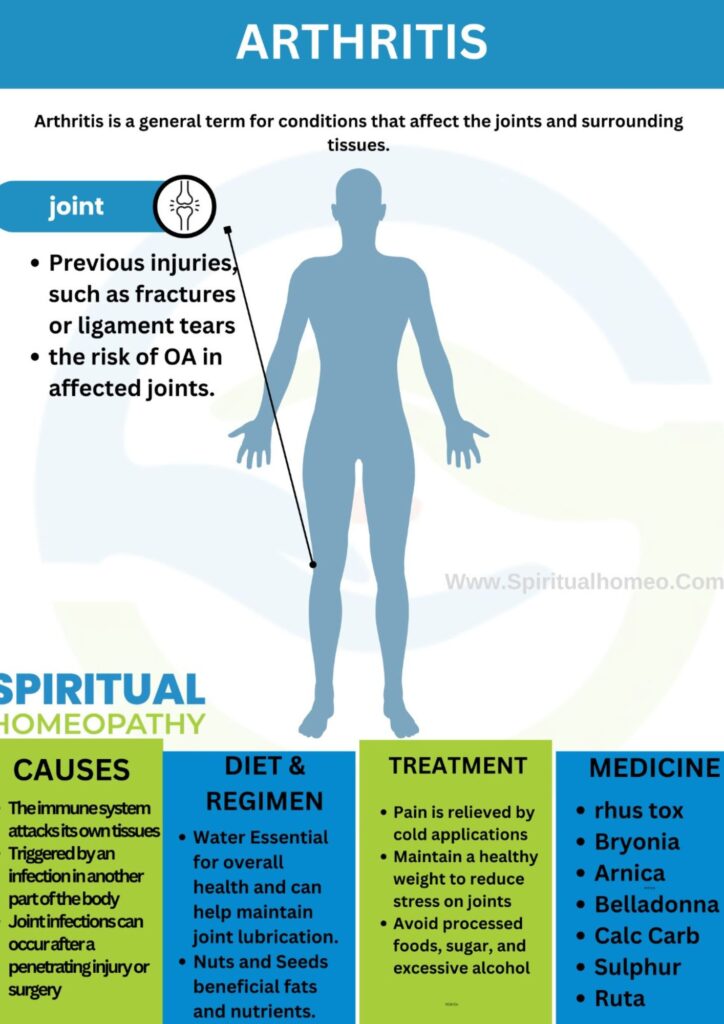Signs and Symptoms of Arthritis
Arthritis symptoms can vary significantly depending on the type and severity of the condition. However, there are common signs that many people with arthritis experience. Here’s an overview of the general and type-specific symptoms:
General Signs and Symptoms:
Joint Pain: Persistent pain in one or more joints, often worsening with movement or after periods of inactivity.
Stiffness: Joint stiffness, especially in the morning or after resting, that generally improves with movement.
Swelling: Visible swelling or a feeling of fullness around the joint due to inflammation or fluid buildup.
Redness and Warmth: Inflamed joints may appear red and feel warm to the touch.
Limited Range of Motion: Difficulty moving a joint fully, usually due to pain and stiffness.
Specific Symptoms by Type:
Osteoarthritis (OA):
Localized Symptoms: Commonly affects weight-bearing joints like the knees, hips, spine, and hands.
Crepitus: A grating sensation or sound when moving the joint.
Bone Spurs: The formation of bony outgrowths around the affected joints.
Managing Arthritis Symptoms Through Diet
For those with arthritis, a diet rich in anti-inflammatory foods can help alleviate symptoms and reduce pain. Consider incorporating the following into your meals:
Omega-3 Fatty Acids: Found in fatty fish such as salmon, mackerel, and sardines, omega-3s have powerful anti-inflammatory properties.
Fruits and Vegetables: High-antioxidant foods like berries, spinach, and kale can help combat inflammation.
Whole Grains: Foods like brown rice, quinoa, and oats contain fiber, which may help reduce inflammation.
Nuts and Seeds: Walnuts and flaxseeds provide omega-3s and antioxidants, promoting joint health.
Healthy Fats: Olive oil is a good source of healthy fat, which can ease joint pain.
Turmeric: Curcumin, the active compound in turmeric, has been shown to reduce inflammation.
In addition to adding anti-inflammatory foods, it’s important to avoid processed foods, sugary snacks, and trans fats, which can worsen inflammation. Limiting red meat and alcohol can also be beneficial. Staying hydrated by drinking plenty of water and reducing salt intake can further support overall joint health.
By following an anti-inflammatory diet and recognizing the signs and symptoms early, you can better manage arthritis and improve your quality of life.




